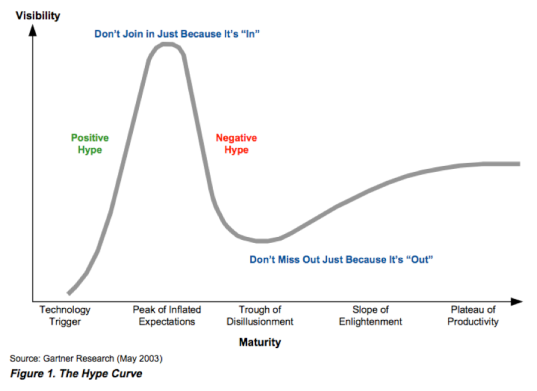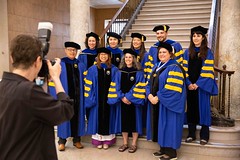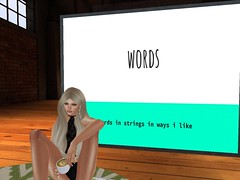Using rubrics to evaluate students and employees
 This post is in response to a discussion last week at the Second Life Tech Soup Friday meeting. The speaker, Gentle Heron, talked about employee performance reviews. She gave tips about how to make them more pleasant; such as providing calendar dates, expectations ahead of time, and opening employee discussions. I added a comment about how rubrics can help with these assessments…which lead to a suggestion that I do a presentation on rubrics this Friday!
This post is in response to a discussion last week at the Second Life Tech Soup Friday meeting. The speaker, Gentle Heron, talked about employee performance reviews. She gave tips about how to make them more pleasant; such as providing calendar dates, expectations ahead of time, and opening employee discussions. I added a comment about how rubrics can help with these assessments…which lead to a suggestion that I do a presentation on rubrics this Friday!
A rubric is an assessment tool that helps score and outline performance expectations.
It got me thinking, ‘I bet most people haven’t been taught to use rubrics effectively!’ When people have an opportunity to rate themselves, and when they know that this rating counts, they take more responsibility to develop an awareness for what they do. As supervisors and teachers, it is only fair to provide these expectations ahead of time. There is a very different feel when one is being judged, versus when one judges themselves. When people are given the opportunity to critically self-assess, they become more aware of their job, and reflective and critical of their own progress. A rubric can not only be an assessment too, but it can be an extremely effective teaching and training tool, too!
When I taught biotechnology to high school students, their grade was based on both my assessment, as well as their assessments. We both filled out the employee rubric separately, then met together to discuss the scores. Their final grade was an average between my assessment and theirs.
Here’s some tips:
- Start with a very clear rubric that outlines all the expectations for employee/student performance. Sometimes, you may not know what all these expectations are, initially. If you don’t, this is a GREAT opportunity to work with your employee or student to develop the rubric together.
- Give this rubric to people ahead of time. Talk about what the assessment looks like. For example, ask, “What does a score of 5 look like in terms of attendance? What about a score of 3? …and 0?” Begin these conversations now, so that there are no surprises. That way, the rubric categories set a standard, and will not be taken as a personal affront.
- Evaluate mostly formatively and occasionally summatively.
- Formative assessments mean that you and the employee/student look at performance periodically, and reflect/revise as you go along. Think of a chef when they’re cooking an elaborate stew. When they are constantly tasting the soup, adding spices here and there, adjusting things during the process, they are doing formative assessments.
- Summative assessments are at the end. Personally, I do not think that these are as useful, but yet the world (starting with education) has somehow used them as standard. Summative assessment is like the final taste test for the food contest. The food is all cooked, finished, and there’s no going back. This is really tough on an employee/student – and if you think about it, where is the opportunity to learn?
- Provide spaces between evaluations to reflect, revise, and adjust not only employee/student performance, but the rubric, itself.
- As a supervisor or teacher, be a “guide on the side,” and mentor – encourage, ask questions, and push, but don’t dictate. From my experience, people “own” their work and their self assessments when they not only understand what is expected of them, but also that their voices, their input counts.
- Start by asking the employee/student to justify their scores. This will give you a good idea of whether their interpretations of the rubrics match your expectations.
- Assessment and evaluation should be a conversation with clear expectations and understanding.
- As a supervisor or teacher, be a “guide on the side,” and mentor – encourage, ask questions, and push, but don’t dictate. From my experience, people “own” their work and their self assessments when they not only understand what is expected of them, but also that their voices, their input counts.
Here’s a list of places to go for rubric designs and example templates.
iRubric – This site provides starter templates for you to design employee rubrics. I would start with a generic template, then pull out the job description (or your learning goals), and then customize from there.
Rubistar – This is a great rubric website for teachers. Similar to iRubric, you can take a pre-made template and customize it to your needs.
Cooper’s Rubric Presentation – Talks more in detail about rubrics, and includes several different types of employee performance rubrics, as well as outlines the steps on how to develop one.
You can also Google “Employee performance rubrics,” “Student rubrics,” “Music rubrics,” etc. to get a base template to begin. Then, customize it to your needs.
Do you have questions about rubrics? Comments? Please ask away and I will try my best to answer!
Next up on rubrics: Creating them.












 I don’t need balls. People expect balls. They react to balls like a scripted sex scene out of a badly directed porn series – thoughtless, automatic, and it never goes beneath the surface to what counts.
I don’t need balls. People expect balls. They react to balls like a scripted sex scene out of a badly directed porn series – thoughtless, automatic, and it never goes beneath the surface to what counts.




